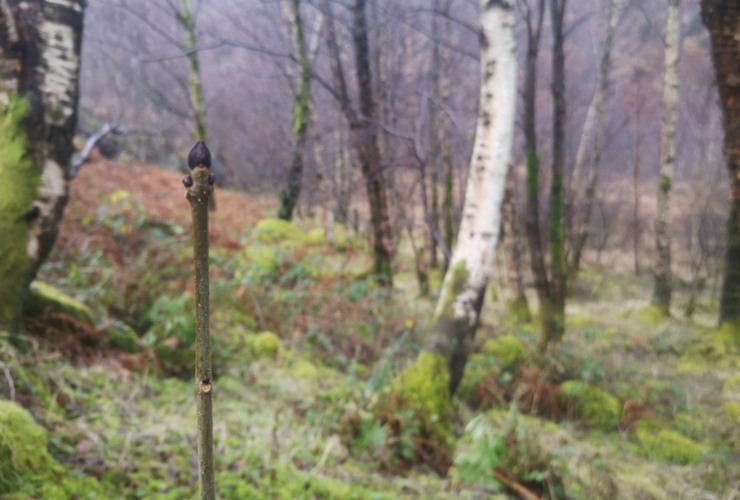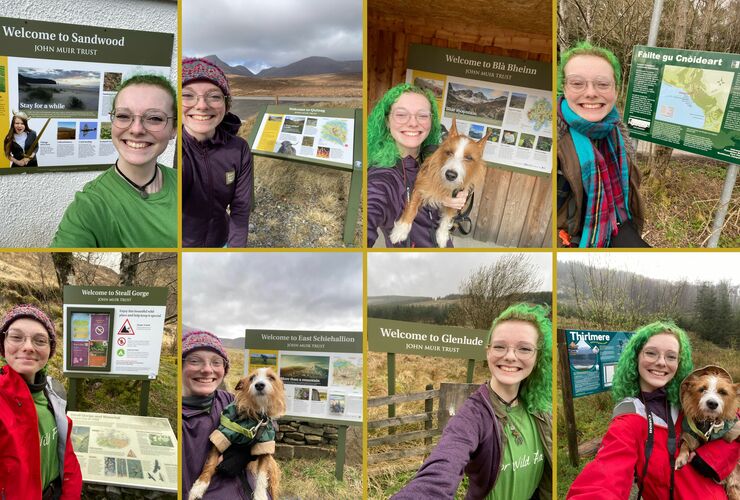Field Notes: Tree detective
Nevis Conservation Officer Nathan Berrie becomes Inspector Gorse to teach us about winter tree identification
 The ancient woodlands of Glen Nevis are unique and wild. In the Steall Gorge, visitors are spoilt for diversity with over a dozen tree types including more uncommon species like aspen and wych elm.
The ancient woodlands of Glen Nevis are unique and wild. In the Steall Gorge, visitors are spoilt for diversity with over a dozen tree types including more uncommon species like aspen and wych elm.
During the warmer months the woodland of Steall Gorge is like an animated botanical field guide. The emerald foliage of spring and summer make it easy for budding ecologists to learn how to identify trees.
But while winter is an excellent time of year to get out, especially if you enjoy being alone in wild places, identifying trees can be a real challenge. It requires the cunning of a crime scene investigator.
Working in a place like Glen Nevis you really start to take notice of the magical transformation of trees through the seasons. You also start to build up a relationship with the trees by getting to know their unique personalities and traits. This knowledge, alongside evidence such as bark and buds, can be very useful for winter tree identification.
For example, let’s take the sessile oak. During autumn, as expected, deciduous trees start to hibernate and their leaves die and fall off. Sessile oak however has adapted to hold on just a little bit longer to take advantage of the light available in autumn. Because of this, even though their leaves eventually die, you can still find sessile oak in Glen Nevis with brown foliage in the height of winter. A great clue for winter tree detectives.
 Sessile oak with leaves still on
Sessile oak with leaves still on
Alder is another species displaying a particular characteristic that can aid identification. Of all the deciduous tree species, the alder is the only one to produce cones. And just like the oak’s leaves, its cones can stay attached throughout the winter (see photo at the top). Another clue to detecting alder is its location. It’s famous for tolerating wet feet so you’ll often find them in wet areas or at the water’s edge – a habitat we have hectares of in Glen Nevis.
Of all the trees in Glen Nevis, the ash is my favourite and provides a good blue print for how to ID trees in winter. Historically ash was used in the Highlands to make shinty sticks – hence the term “clash of the ash.” First you look at the bark - in younger trees it’s smooth and pale grey, but in older trees it’s ridged and looks similar to a mature oak. Second you look at the buds – they are black and make the ash twigs look like burnt out matches. Some argue this is what gives ash its name. Third you look at the tree's characteristics. If the tree is mature, the ash is often the tallest and slimmest tree in the woodland. Lastly you look at the ground around you – what are the dominant leaves you have at your feet? This usually gives it away.
 Ash bud looking like a burnt match
Ash bud looking like a burnt match
When learning about winter tree identification it helps if you have a woodland nearby that you can get to know over a period of time. If you pay attention you’ll start to notice subtle changes, even walking through it for just an hour, once a month. Over time you’ll start noticing more and building confidence until one day you realise you’ve become a bona fide tree detective!
Find out more about our work at Ben Nevis.
All photographs by Nathan Berrie - top picture shows an alder with cones

